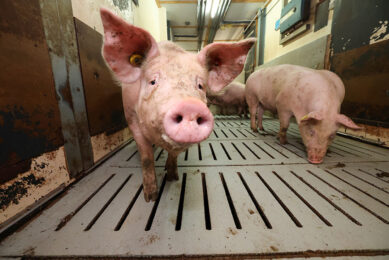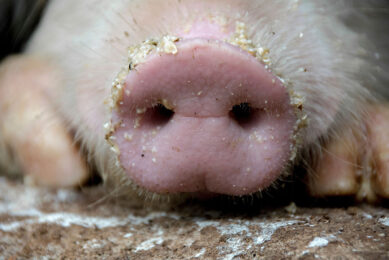2018 outlook: Animal protein production growth continues

Animal protein production is expanding around the world, and increasing competition – between the species for share of consumer wallet and between exporters for access to import destinations – is creating many areas of opportunity for both producers and processors.
That, in short is the key message of RaboResearch’s Animal Protein Outlook for 2018.
“Rabobank expects animal protein production to increase in all regions, with total production growth once again surpassing the 10-year average,” stated Justin Sherrard, global strategist – animal protein at Rabobank in a press release shared by the bank. “This strong production increase is mainly being driven by Brazil, China, and the US.”
Beef and pork contribute to global expansion
Looking at production across species, beef joins pork as a strong contributor to global expansion, the press release explained. In 2018, global beef production is expected to expand for a 3rd consecutive year, and global pork production is expected to see another year of significant expansion. Poultry production is also expected to grow, but will be down slightly on 2017.
In seafood, aquaculture continues to drive seafood supply growth. Sustainable growth in the seafood industry solely depends on aquaculture, although the bank expects the wild catch industry to recover after El Niño recedes in 2017. Zooming in, the salmon market is recovering, fishmeal prices will stabilise, and the shrimp industry is likely to continue growing.
Countries hope to increase exports
“The Rabobank trade scorecard for 2018 shows that many countries are looking to increase exports, and this will be a major part of the increased competition we expect in 2018”, according to Mr Sherrard.
While specific trade outcomes will also reflect growing demand, access issues and policy decisions, the bank expects trade to represent an important area of both opportunity and uncertainty over the coming year. Uncertainty in 2018 will come from the heavy overlay of politics in trade policy – such as the NAFTA negotiation, Brexit and the US-China trade relationship – which is not new but does seem to have become more common, and from biosecurity issues – such as Avian Influenza, African Swine Fever and EHP (a fungal infection in shrimp) – which again appear susceptible to political involvement.
Mr Sherrard said, “Trade should be the top-of-mind issue for global animal protein as we head into a new year, and enhancing competitiveness is going to be critical for success.”
Consolidation and alternative proteins
Looking beyond markets and trade, the bank identified 4 other issues that will dominate the headlines for animal protein in 2018:
• Increasing although uneven industry consolidation;
• The evolving retail landscape;
• Alternative proteins; and
• Technology.
In food retail, the evolving landscape is one of more channels, more product options, and more velocity for instance due to blurring retail channels.
Online fresh food sales in China
This will bring new areas of opportunity, according to the bank, such as online fresh food sales in China, and generally bring opportunities to strong and agile animal protein supply chains. Alternative proteins will grow further from their small base and continue to capture consumer interest in innovative food.
At the same time, the animal protein production chain, and especially aquaculture, will focus on alternative proteins as an innovative feed ingredient. When it comes to innovation, technology – and in particular data-driven technology – is starting to deliver value along the animal supply chain for instance by increased supply chain (cost) management. 2 important drivers behind the increase of technology are reducing the environmental footprint and addressing social concerns.
Chances and opportunities per region
Last but not least, the bank subdivided the world in various regions and identified chances and opportunities for each of them.
N-America:
Production continues to grow
Ongoing production expansion across the species increases the dependence on trade, yet access to trade markets will be an area of uncertainty during 2018.
Brazil:
Production will increase in 2018
Brazil & Argentina are set to increase beef production by 5% and 4%, respectively, with Brazil also expanding poultry and pork production.
EU:
Exports are key in a challenging market
Access to export markets is increasingly important for processors, as production rises, while social issues remain top of mind for domestic consumers.
China:
Pork supply up, poultry stays flat
China’s pork market is entering a down cycle, with imports set to rise as structural adjustment continues. Overall poultry supply will be flat, with white bird supply declining and other species rising. Beef supply will grow steadily, with imports being the main driving force.
SE Asia:
Production growth will decelerate
Poultry production is tapering off in response to oversupply. Beef demand will continue to be met by imports, with price being the main focus in trade decision making.
Oceania:
Beef/lamb will remain steady
Improved seasonal conditions support Australian producer demand for cattle amid softer export markets, while in New Zealand, beef exporters are reliant on continued demand growth in export markets.
Join 18,000+ subscribers
Subscribe to our newsletter to stay updated about all the need-to-know content in the pigsector, three times a week. Beheer
Beheer










 WP Admin
WP Admin  Bewerk bericht
Bewerk bericht